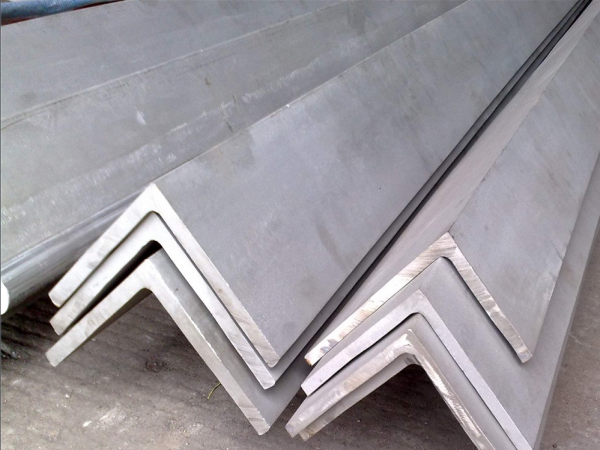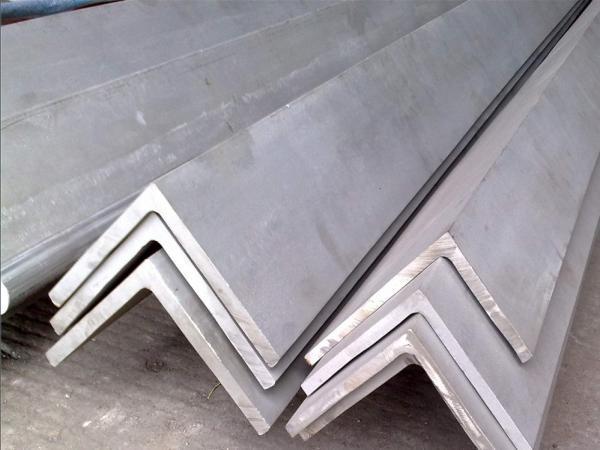Angle steel, commonly known as angle iron, is a long strip of steel that is perpendicular to each other and forms an angle.
Angle steel, like
mild steel pipe, is a carbon structural steel for construction.. It is a simple cross-section section steel and is mainly used for metal components and frames of factory buildings. In use, it is required to have good weldability, plastic deformation performance and certain mechanical strength. The raw material billet for the production of angle steel is low-carbon square billet, and the finished angle steel is delivered in the state of hot rolling, normalizing or hot rolling.
Angle steel can be composed of various stress components according to different needs of the structure, and can also be used as a connector between components. Widely used in various building structures and engineering structures, such as beams, bridges, transmission towers, lifting and transportation machinery, ships, industrial furnaces, reaction towers, container racks, cable trench supports, power piping, busbar support installation, and warehouses shelves etc.

Species
It is mainly divided into two types: equilateral angle steel and unequal angle steel. Among them, unequal angle steel can be divided into two types: unequal sides and equal thickness and unequal sides and unequal thickness. The specifications of angle steel are expressed by the dimensions of side length and side thickness. At present, the domestic angle steel specifications are No. 2-20, with the side length in centimeters as the number. The same angle steel often has 2-7 different side thicknesses. The imported angle steel indicates the actual size and thickness of both sides and indicates the relevant standards. Generally, those with a side length of more than 12.5cm are large angle steels, those between 12.5cm and 5cm are medium-sized angle steels, and those with a side length of less than 5cm are small angle steels.
Import and export angle steel orders are generally based on the specifications required in use, and the steel grades are the corresponding carbon steel grades. It is also the angle steel that has no specific composition and performance series except for the specification number. The delivery length of angle steel is divided into two types: fixed length and double length. The selection range of fixed length for domestic angle steel has four ranges: 3-9m, 4-12m, 4-19m, and 6-19m according to different specifications. The length selection range of angle steel made in Japan is 6-15m.
The section height of the unequal angle steel is calculated according to the long side width of the unequal angle steel. Refers to steel with an angular cross-section and unequal sides. It is a kind of angle steel. Its side length is from 25mm×16mm to 200mm×125mm. Rolled by hot rolling mill.
The general specifications of unequal angle steel are: ∟50*32--∟200*125 with a thickness of 4-18mm.
Unequal angle steel is widely used in various metal structures, bridges, machinery manufacturing and shipbuilding, various building structures and engineering structures, such as beams, bridges, transmission towers, lifting and transportation machinery, ships, industrial furnaces, reaction towers, Container racks and warehouses, etc.
Appearance Quality
The surface quality of angle steel is stipulated in the standard, and it is generally required that there should be no harmful defects in use, such as delamination, scarring, cracks, etc. The allowable range of geometric shape deviation of angle steel is also stipulated in the standard, generally including bending degree, side width, side thickness, top angle, theoretical weight, etc., and it is stipulated that the angle steel must not have significant torsion.
chemical composition
(1) Composition indicators: The chemical composition of angle steel belongs to the series of rolled steel products for general structure, and the main verification indicators are C, Mn, P and S. According to different grades, the content varies, and the approximate range is C<0.22%, Mn: 0.30-0.65%, P<0.060%, S<0.060%.
(2) Inspection method: When detecting the above chemical components, commonly used standard inspection methods include GB223, JISG1211-1215, BS1837, BS Handbook 19, ГОСТ22536, etc.
Specifications
GB/T2101-2008 (general regulations on section steel acceptance, packaging, marking and quality certificate);
GB/T706-2008 (instead of GB/T9787-88 GB/T9788-88) (dimensions, shape, weight and allowable deviation of hot-rolled equilateral/unequal angle steel);
JISG3192-94 (shape, size, weight and tolerance of hot-rolled section steel);
DIN17100-80 (common structural steel quality standard);
ГОСТ535-88 (technical conditions for ordinary carbon steel).
According to the stipulations of the above-mentioned standards, the angle steel should be delivered in bundles, and its bundled pass and bundled length should meet the regulations. Angle steel is generally delivered naked, and moisture-proof should be paid attention to during transportation and storage.
Mechanical behavior
(1) Inspection method:
① Tensile test method. Commonly used standard inspection methods include GB/T228-87, JISZ2201, JISZ2241, ASTMA370, ГОСТ1497, BS18, DIN50145, etc.;
② Bending test method. Commonly used standard inspection methods include GB/T232-88, JISZ2204, JISZ2248, ASTME290, ГОСТ14019, DIN50111, etc.
(2) Performance indicators: The inspection items for evaluating the performance of angle steel are mainly tensile test and bending test. Indexes include yield point, tensile strength, elongation and bending qualification.
weight calculation
Weight per meter=0.00785*(side width+side width-side thickness)*side thickness
For example, 50*5 angle steel: (50+50-5)*5*0.00785=3.73 (this algorithm can only roughly calculate the weight of the angle steel, the actual hardware manual shall prevail)













 Eastern Steel Manufacturing Co.,Ltd not only improve product production and sales services, but also provide additional value-added services. As long as you need, we can complete your specific needs together.
Eastern Steel Manufacturing Co.,Ltd not only improve product production and sales services, but also provide additional value-added services. As long as you need, we can complete your specific needs together.











